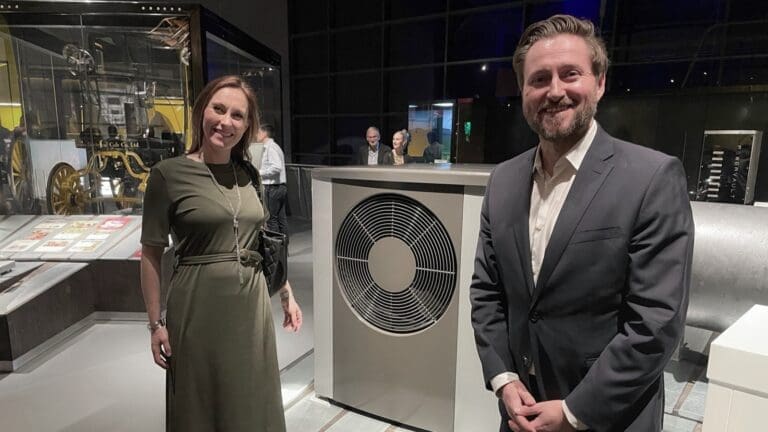
Among the items on display in the Energy Revolution: The Adani Green Energy Gallery, is an intelligent, inverter-controlled, air source heat pump from manufacturer, NIBE.
The high temperature NIBE S2125 heat pump uses natural refrigerants and automatically adapts to a home’s output requirements all year round.
It’s the only heat pump of its kind chosen for the gallery and will help educate millions of visitors on the transformation of energy supply and use.
The air source heat pump features as part of the ‘Future Power’ section, alongside nuclear fusion experiments, tidal turbine blades and other contemporary technologies.
‘Delighted to have been chosen for this important gallery’
Olivia Powell-Maycock, head of marketing at NIBE, said: “We are delighted that NIBE’s S2125 has been chosen for this important gallery. It’s exciting to see our heat pump sitting alongside innovative examples from the past, present and future.
“The Science Museum is such an iconic part of London’s attractions, entertaining and educating in equal measures – the ideal platform to get the climate change message across, while demonstrating the inspiring technological developments that will hopefully lead to more positive outcomes for the environment.”
The new exhibition replaces the Atmosphere gallery and is split into three sections.
‘Future Planet’ explores the climate changes we are already experiencing and examines how scientists use complex computer models to glimpse the climate futures we could face, depending on the decisions we make today.
‘Future Power’ focuses on the projects and technologies that could be used in a low-carbon future, from historic artefacts to contemporary technologies.
‘Our Future’ includes children’s ideas of how the world will meet its energy needs in decades to come.